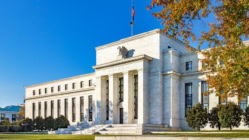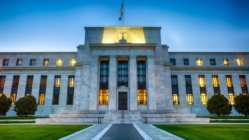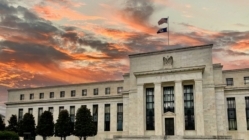I spent ALL morning thinking about chunky highlights; gaucho pants; “wide-ass belts”; swoopy, floppy hair; wide headbands – and many other things that were cool in 2007, but aren’t cool now!
My 2007 obsession was fostered by the fact that the 10 Year Treasury Yield hit a level we have not seen since that glorious year (you should have seen my chunky highlights!)
Rates shot way up yesterday and this morning largely in response to the Fed’s comments yesterday – via what the media are calling a “Hawkish Pause.”
So yes, the Fed said that they would “pause” their rate increases, but Fed Chair Powell also said they’d hold rates “higher for longer.” And, more importantly, Mr. Powell painted a very rosy picture for the economy – lowering unemployment projections and increasing GDP growth projections.
The bond markets digested all this news, and rates shot up. Here are a few utterly fascinating observations.
Mortgage Rates Did Not Hit Record High Despite The 10 Year Treasury’s Record – Why???
In mid-August, I wrote this blog: Rates Hit 23-Year High (I Hate It When That Happens), explaining that mortgage rates hit a level not seen since 2000! It is fascinating that mortgage rates are about the same today, even though the 10 Year Treasury Yield is much HIGHER than where it was in mid-August when I wrote that blog.
This is because mortgage rates and 10 Year Yields (the primary interest rate benchmark) do not always move in lockstep, as I explained in this blog: 10 Year Treasury Yields Vs. Mortgage Rates (Great Info & Good News!). It appears that mortgage volume is now so low that investors, desperate for mortgages, are willing to pay more for them relative to Treasury Yields. And that in turn is shrinking the spread between mortgage rates and Treasury Yields.
The Fed Is Wrong
NOTHING worries Fed Chair Jay Powell more than hearing that some mortgage guy in Texas disagrees with him. OK… probably not. But, what should worry Mr. Powell is stark disagreement from the likes of economist David Rosenberg – whose track record is excellent.
Rosenberg tweeted this yesterday: “Same institution that brought us “no tech bubble” in 2000, “subprime contained” in 2007, “green shoots” in 2009, “funds rate through neutral” in 2018, “transitory” in 2021, is now peddling “higher for longer” in 2023. Fade the Fed.”
Rosenberg’s point of course is that the Fed is wrong time and again, mimicking a point that Jeff Snider and many other analysts also repeatedly make.
Today’s Fed Comments Remind Me So Much Of 2007; Why Fed, Why?
The Fed was making very similar comments in 2007 when we were on the precipice of the biggest crash ever, and when many of us in the mortgage and real estate industries could obviously see it coming.
So why does the Fed continue to make such comments? Here are a few suggestions: (1) The Fed could be right… but I very seriously doubt it; (2) The Fed could be political and trying to help out Mr. Biden, but that seems unlikely because the damage will be that much worse when the recession hits; (3) The Fed truly doesn’t understand that employment lags recessions, as I explain in this blog – Busting the Employment Myth! or (4) the Fed is trying to convince the markets not to count on a “Fed Pivot” (rate reduction) to save the day in an effort to calm animal spirits and help further quell inflation. I am leaning towards #4, with a bit of weight on #3.
Borrowers Put Too Much Weight On The Fed Or Misinterpret The Fed
Despite today’s higher rates, real estate is still happening, as we had six contracts come into our Walnut Creek office alone. But, what is interesting is that four of those buyers did NOT want to lock yesterday, largely in response to the Fed announcement about not raising rates. Those borrowers should have read the accompanying comments too. And – this is another reminder to lock when the locking is good, and to never try to anticipate movements up or down.
Mortgage Rates Can Fall Irrespective Of Fed
While the markets respond to the Fed’s comments in the short term, the Fed does not have as much control as most people think over the long term. This is particularly the case when it comes to long-term (30-year) rates. As I remind readers often, a major economic or political event (stock market crash, currency crisis overseas, war, etc.) could bring long-term rates down very quickly, irrespective of anything the Fed says or does.
Why Do I Say “Rates Shoot Dangerously High?”
It’s definitely not clickbait 😊 But, I do legitimately think they are “dangerously high” now because our precariously weak economy cannot begin to afford them.
Sign up to receive our blog daily
























